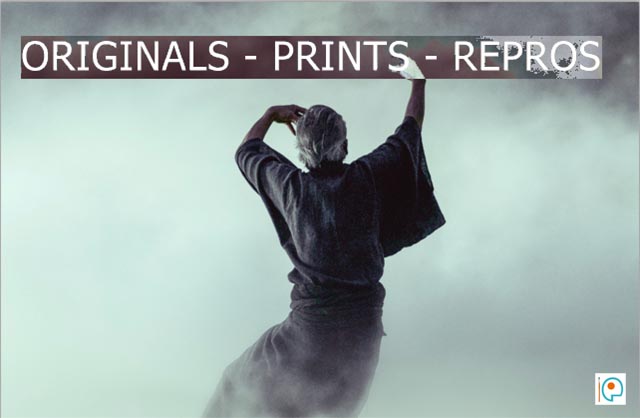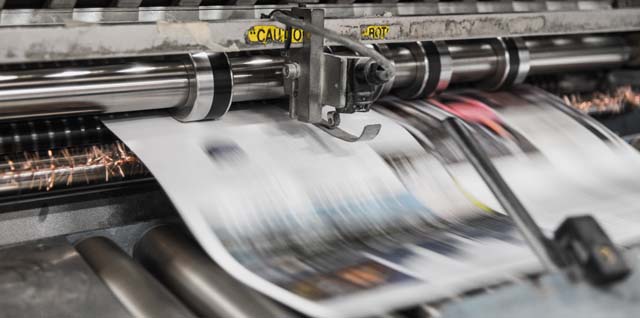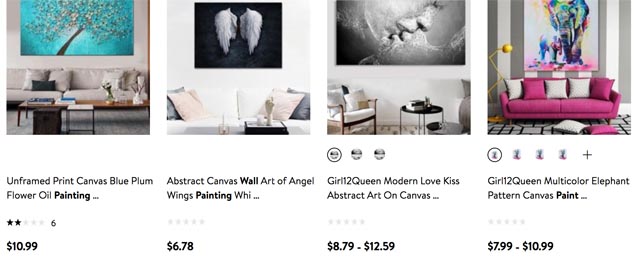Text version: Originals - Prints - Reproductions - Giclees. What, Why, How!

Originals - Original Prints - Reproductions - Giclees. What, Why, How!
We often get the question of original art versus prints versus reproductions. What should I produce? Is example "A" considered an original or a reproduction? I talked with an artist in Spain just the other day and his question was: "I have created a work in photoshop, then I have it giclee printed onto canvas and hand color some parts afterwards. Is that considered an original or a reproduction?"
I believe an artist should not be constrained or concentrate on just one medium but take advantage of all aspects of creating art that also includes creating originals, original prints and reproduction art. Each category has its advantages and disadvantages and each artist needs to figure out what's best for themselves. Everyone has their personal preferences and I personally prefer original art, not adverse to original prints but don't like the crap at box stores, Target or Ikea. If you go to any box store and view the availability of cheap reproductions on canvas for $39.99, you have to wonder what many prefer or if they even know what the difference is or have such a lack of understanding of art that they don't care.
Let's examine originals, original prints and reproductions.
It should be pretty obvious what an original work of art is. An original work created by an artist such as a painting, a sculpture, a photograph, a tapestry, an installation, and others are pretty straight forward examples of original artwork and don't need much explanation.
It gets a little fuzzier for many when you start talking original prints, prints and reproductions. Original art prints are multiple impressions of one image that are hand printed (hand pulled) as a limited edition by the artist or under close supervision by the artist. Makes sense, right? So, you would create the original image on a stone, metal plate, wood plate and either hand print it or if someone else is doing the work you would need to be there and supervise and approve every print, at least that's what the traditional laws used to be. Do you think that Andy Warhol, Pablo Picasso, Miro and Dali all stood there and supervised every single print? I seriously doubt it. It is said that Salvador Dali editioned and signed blank sheets of paper and a printer would later transfer the image onto the paper; one will never know if that is true or not, but I would not be surprised.

Original prints are all always part of a finite or limited edition. Many artists, especially emerging artists should keep the number of the total edition low. You will have an edition of 5, 10, 20 and maybe 50, but not much more. More famous artists will do editions of 150, 200, 500 and I have even seen 1,000+. If I remember right as soon as it passes 3,000 the work looses its status as an original artwork and simply becomes a print/poster/reproduction. As an emerging artist you want to stay low in the edition size to keep the value of each print at a reasonable level. The larger the edition the harder it is to justify high prices to client and keep their interest to purchase one of your prints. Would you rather buy a print that is 3/10 or 459/500? Traditionally, you would print all prints of an edition at the same time. So, if the edition is 20 they would all be printed all at once. You would then number and sign each piece accordingly 1/20, 2/20, 3/20 ... 20/20. Once those are done you will then destroy the plate, clear the stone, or erase the printing plate for a new image. Of course not everyone does/did that and fraudulent editions can appear at a later date. So, if you use a commercial printing facility to do your printing make sure that the printer will destroy the plate afterwards. You don't want a nasty surprise years down the road. So, when you start out printing you can also have an edition of 1/2 or 3/5, etc. But once you have printed and sold all of them you can never reprint them again from the original plate.
If you have ever done traditional or quality printing before you will have run across something called a working proof, trial proof or an artist proof, A.P., H.C, etc. Working proofs are supposed to be prints that get pulled/printed during the setup and finalization process. These can be quite different from the final printed edition and some collectors value them much higher than examples from part of the edition. They see these as almost unique because there is a lower chance that multiple exact examples exist. I think the value depends on how the proof turned out, the quality, the image, etc... At the end of the edition some artists also pull a few extra prints and designate them to be artist proofs. You obviously don't want to have an edition of 5 and then pull an extra 20 artist proofs. That totally defeats the purpose of a numbered edition to begin with.

Reproductions are usually commercially printed or high volume printed images of let's say an original painting or photograph. How many "Water lilies" or "Stary Nights" have you seen during your lifetime? You will not edition these but you may sign them. Some artists call these open edition prints, a fancier name than poster, right? Some artists sign these to make them more "legitimate" or "higher valued items", but in my opinion it only shows that the artist looked at it and put his signature on it.
Of course don't forget the ever popular giclee on paper or giclee on canvas, the images on coffee mugs, pillow cases and shower curtains, posters and unumbered unsigned prints those are all considered reproductions and are not nearly as highly prized by collectors and should always be priced lower than original prints. Giclee is a french slang term for "spray", and I think you can figure out what that means and what connotation it has! Giclees are cheap to produce and the great aspect is that you can produce them on demand. Thus you don't have to pull 20 prints all at once but simply send an image file to a commercial printer and voila he will giclee print the image for you. Very popular today, but I am not sure how they will ever hold their value down the road. I maybe old school but I see giclees as a glorified version of the old poster. The quality often sucks but it has improved over the years and will get ever better with technological advances. Question is who are you selling to? Millennials or Baby Boomers, museums or foundations, hotels or serious private collectors. Each has their preference or will regard art as something different.

Some box stores, shops or pseudo galleries will sell canvases with photographically transferred imagery as paintings; they may have even printed the artists signature on the canvas as well or an original signature may come with it. Those are all reproductions and not original prints! When in doubt always ask, if they tell you it's an original or won't fess up to it, you should walk away as fast as you can. Reminds me of the old 1970's and 80's boiler room art sales where you would receive phone calls and an incredible opportunity to "invest" in this particular artist by buying a very 'valuable' print - remember Dali, right? Fantastic artist - but what's real and what's not is now left up to the real experts for sure.
I am not saying that every artist should only print original prints and deny the venue of giclee or non-original commercial printing. Some artists are very successful by selling their images via giclee and print on demand platforms or by printing their imagery on all kinds of materials, Andy Warhol would be proud of them. Without pop art and pop culture we would never be where we are today. Figure out what works for you but never ever sell a reproduction as an original print or vice versa! It won't bode well for your artistic career.
To me personally an original or original print just has a certain type of magic, essence and maybe even soul that a reproduction like a giclee never does. I doubt you would go to an exhibition of giclee canvases over an exhibition of originals. The original work just feels different, has a different aura than a reproduction of the original. You go - wow that is a great Freud or Rothko in the museum gallery but then you see the same image a tiny bit smaller in the museum store and you go ah, that's just a copy and the colors really suck compared to the original just three floors up. Yet, you can take the affordable copy home and that may be a market for you. If they wouldn't sell the museum wouldn't be offering them, right?
Be consistent and document your editions. Nothing worse than 30 years from now, your prints are selling well at auction and you have no record to substantiate its value, its history, its real edition, when and where it was printed, etc... I think you know it means a lot lower value and less money for you. So take my word for it and be organized!
About Markus Kruse - BFA, MA, PhD
Markus, founder & owner of absolutearts.com started his art career at a gallery in the early 1980's in Berlin, Germany. Since then he has actively participated in the art world: worked with thousands of contemporary artists all over the world; curated exhibitions for years; directed several art galleries; organized many artshows; sold thousands of artworks; taught college for a while and has applied his in depth knowledge and expertise to further the online art world. He has always shared his expertise and helped artists further their artistic careers. Interested in getting ahead - take advantage of our private consulting sessions?




